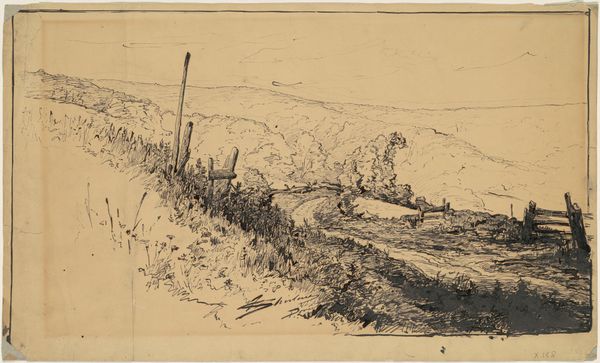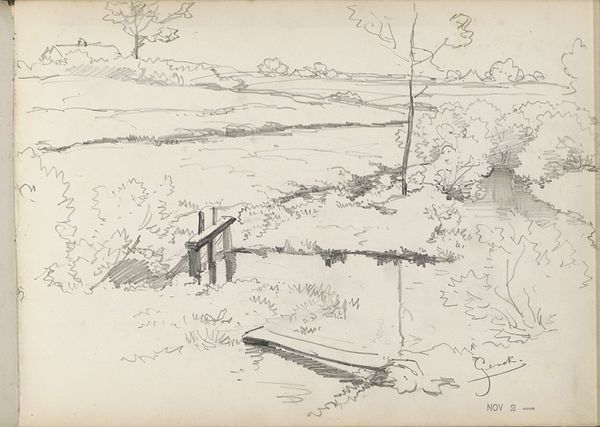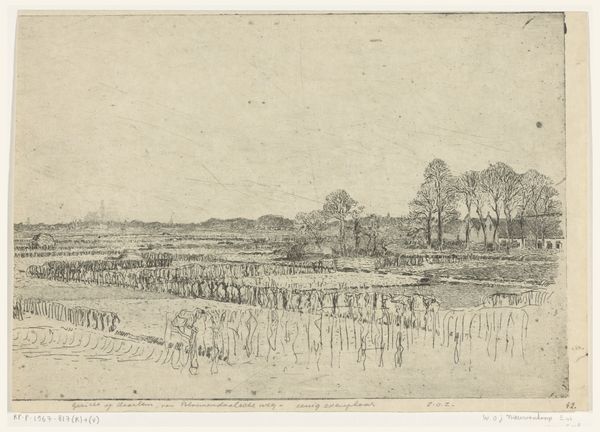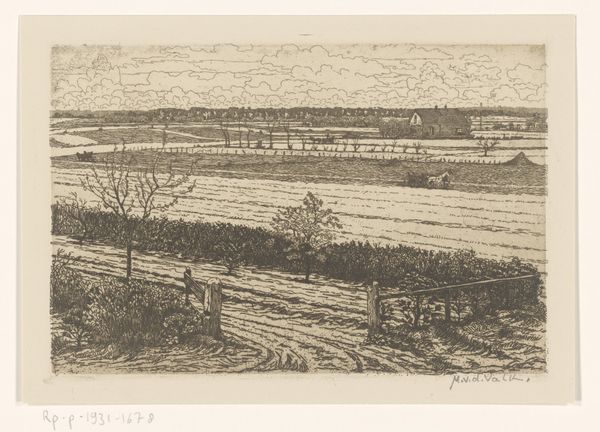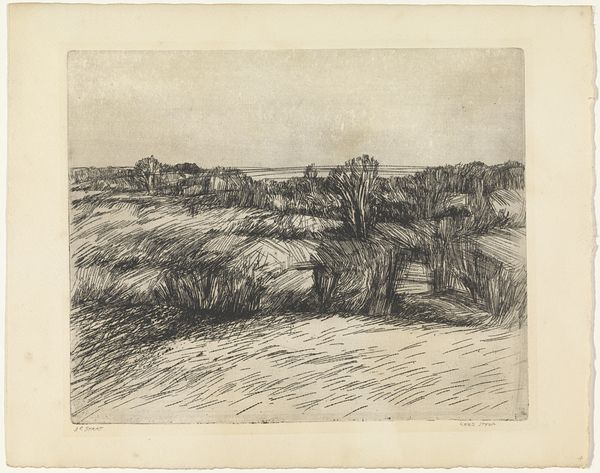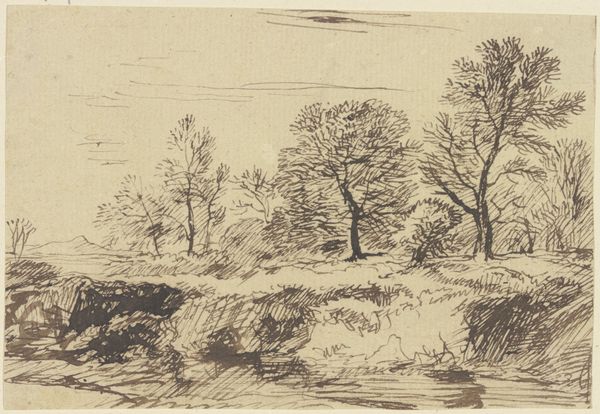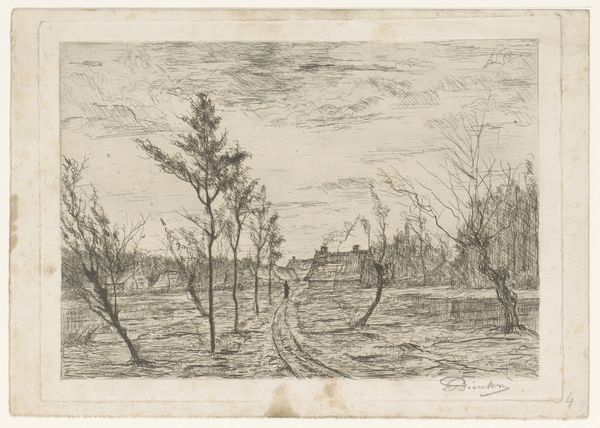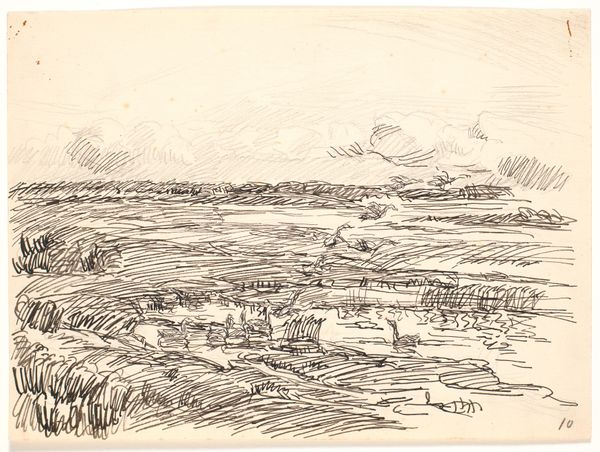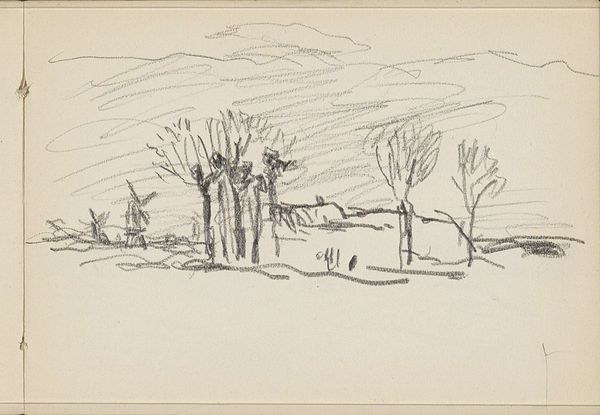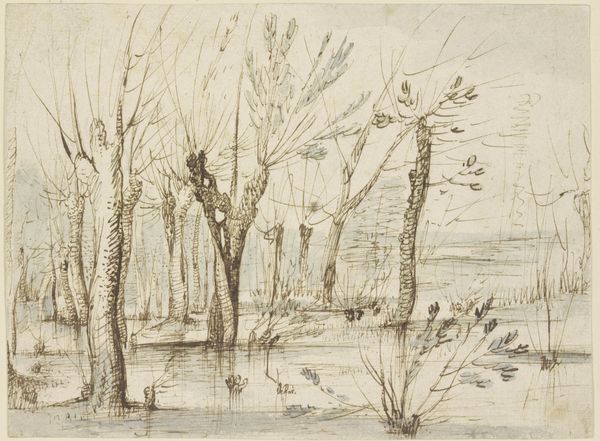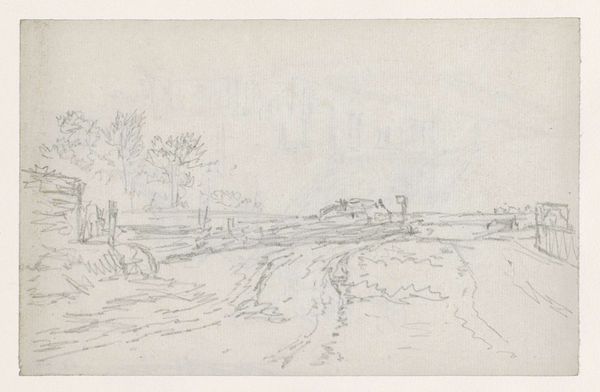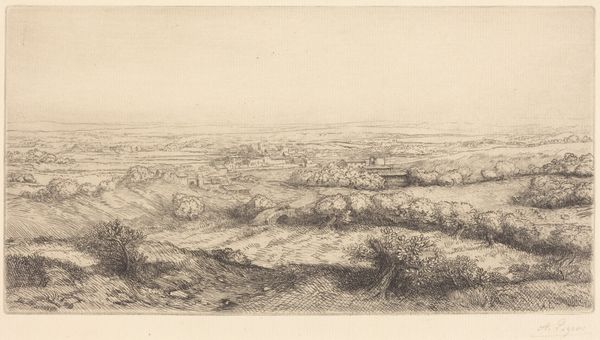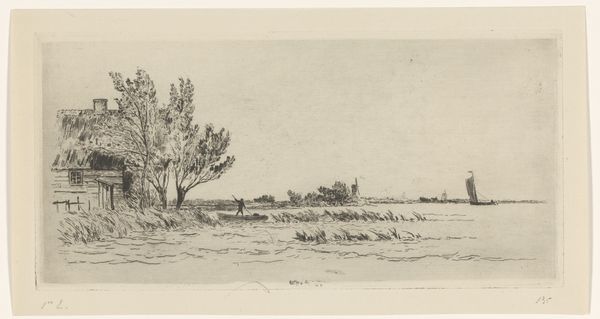
Copyright: Public Domain
Curator: Nussbaum's "Position off Verdun," created in August 1917, is a powerful pencil drawing held here at the Städel Museum. Editor: Stark. That's the word that immediately springs to mind. The stark contrast between the faint horizon line and the dense thicket of barbed wire in the foreground really grabs your attention. Curator: The date itself, 1917, places this drawing squarely within the context of World War I. Verdun, of course, was the site of one of the longest and bloodiest battles of the war. So it's impossible to separate the image from that reality. The very emptiness here speaks volumes. Editor: I agree that historical context enriches our reading. Still, notice how Nussbaum directs our gaze with those repeating vertical lines. The fence posts almost mimic the fallen or blasted trees in the middle ground, and the entire composition resolves to horizontal planes which provide a flattening effect on the subject. Curator: And that flattening reflects the industrialization of war, wouldn't you agree? This isn't a romantic landscape. This is a landscape defined by its capacity to inflict and withstand violence, made possible by unseen networks of political and industrial actors. Editor: An astute observation! While it evokes war's brutality, the interplay of the skeletal tree branches against the expansive sky is really well balanced, too. The drawing has almost no tonal depth yet still succeeds to impart some of that sense of deep loss with skillful formal execution. Curator: Indeed, the drawing offers a window into the collective trauma experienced during the war. Nussbaum is communicating the realities of modern warfare but also documenting the devastating consequences of militarized nationalism that redefined both European life and landscapes. Editor: In closing, it’s amazing to see how Nussbaum manipulates relatively simple elements like line and shade to conjure up a scene so dense with material and conceptual presence. Curator: It truly demonstrates art's capability to render even the most difficult history visible.
Comments
No comments
Be the first to comment and join the conversation on the ultimate creative platform.
